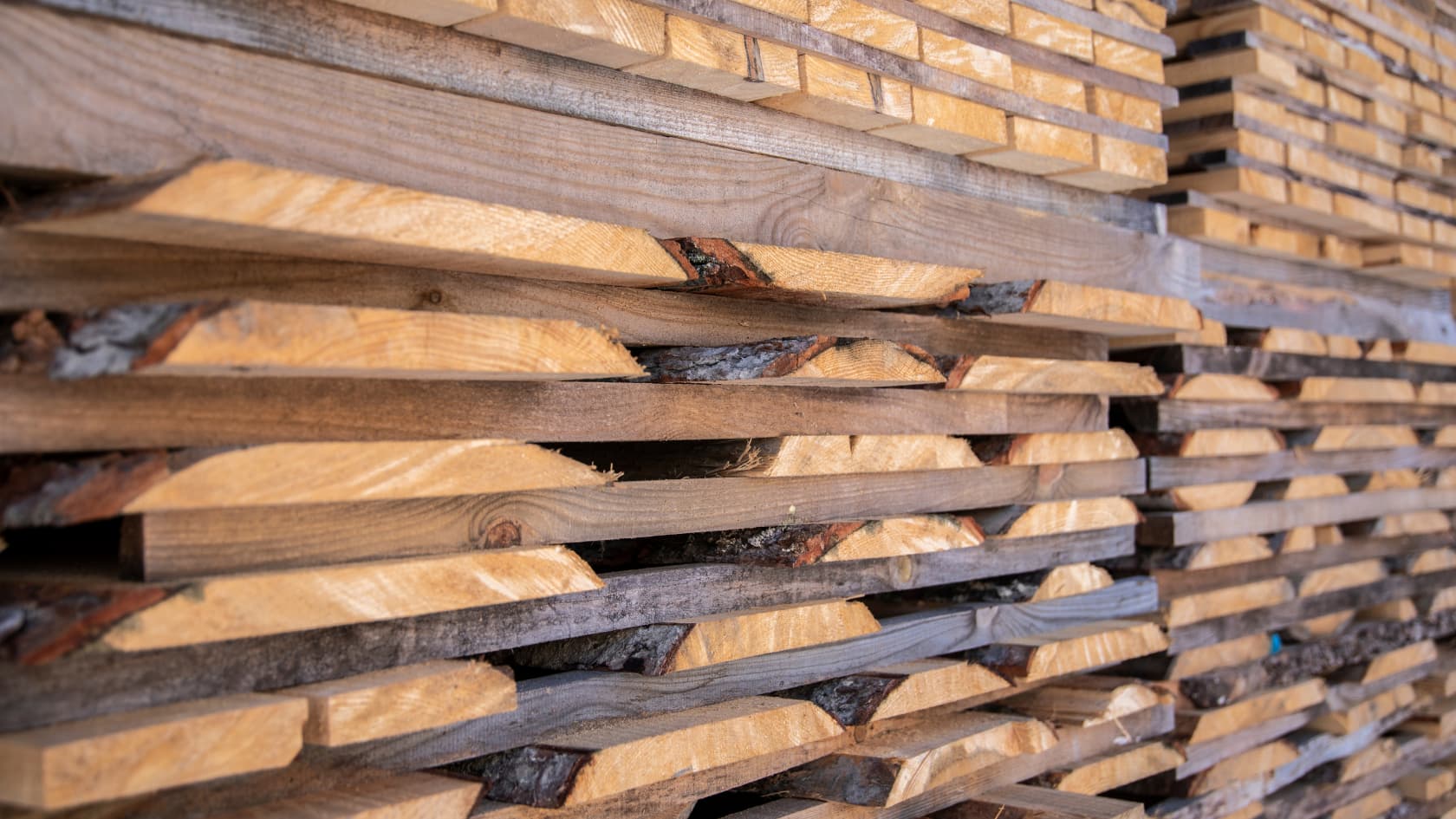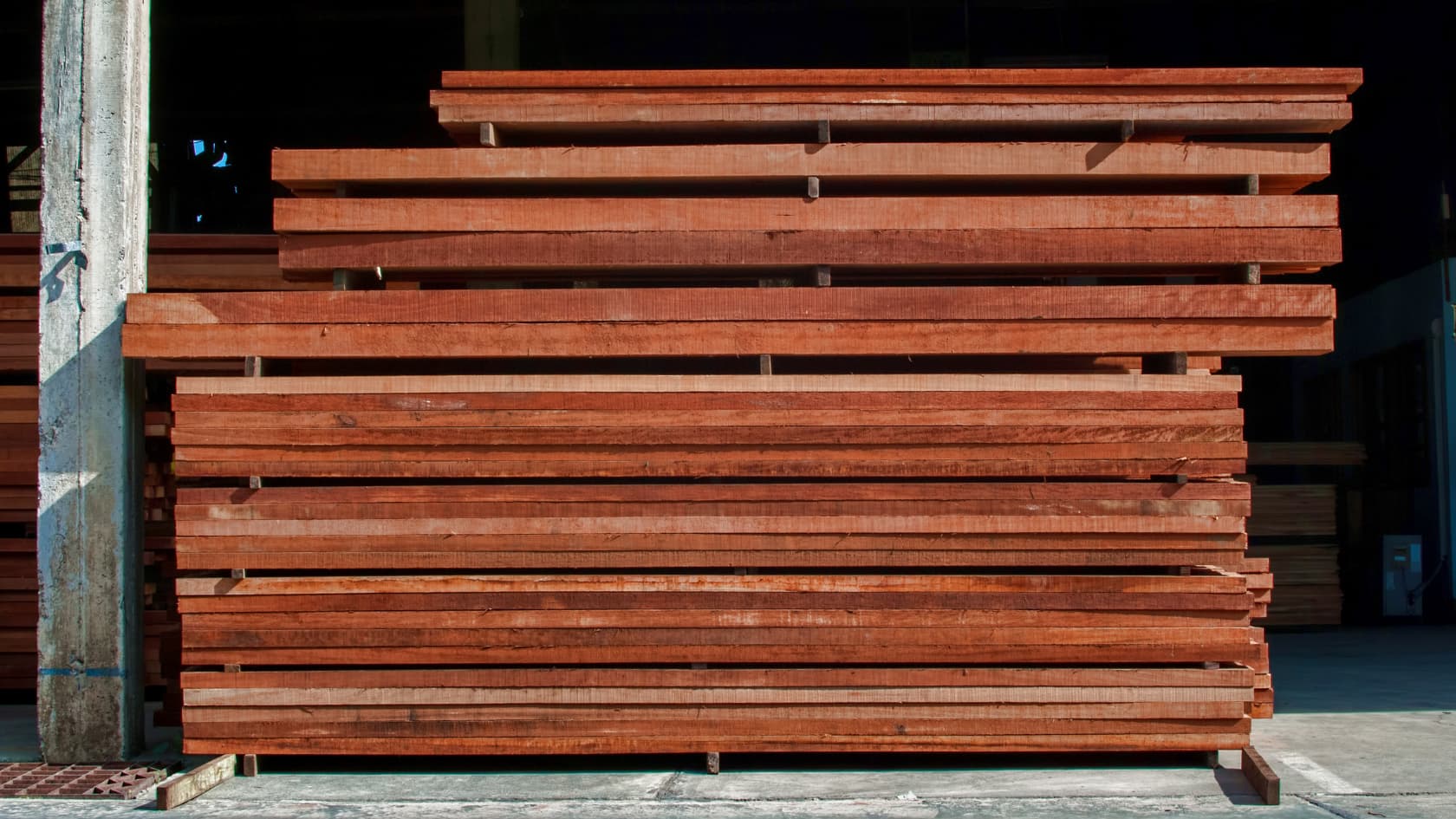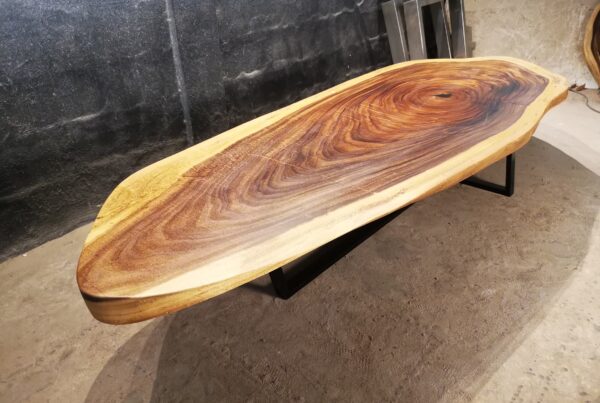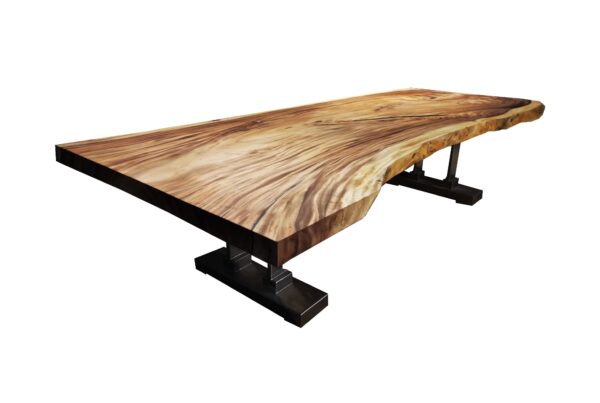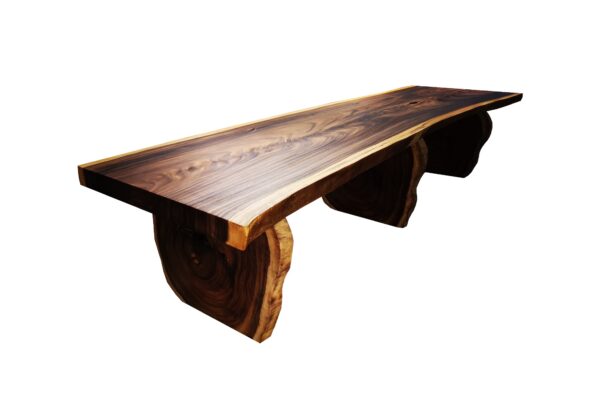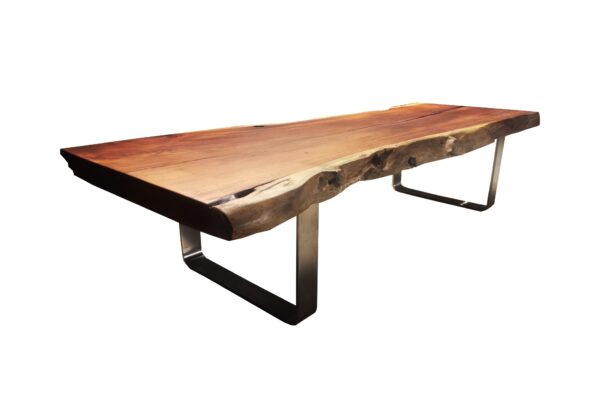
Why proper wood drying is so important
As you may be aware, the trees from which our live edge tables are derived require water to thrive. So, when trees are cut down, there will be a lot of water inside.
The boards must be dried after cutting to limit the amount of water inside them. There are two options for accomplishing this.
The first option is accessible to everyone because it is natural and entails allowing the boards to dry outside while still being protected from the weather. The second approach, on the other hand, necessitates the use of a drying oven and is the industry standard.
The boards must be piled, separated from one another by strips that enable ambient air to circulate between them, allowing them to dry more quickly.
How long will it take for live edge wood planks to dry?
In truth, the answer varies depending on the type of wood and its thickness, since hard woods might take up to 12 months per centimeter of thickness, whilst soft woods take only six months per centimeter of thickness. However, these times are only estimates, and it’s usually safer to use a moisture meter.
Even after the boards have been treated, improper wood drying can produce distortions and thickness differences. Imagine how frustrating it is to discover a piece of furniture that isn’t the same as the one you produced since the wood has continued to age.
Why is it necessary to dry wood
Water makes up a considerable portion of freshly cut wood, ranging from one-third to more than half of its weight. If you tried to cut a green wood, you would immediately notice on the blade how much humidity is contained inside it, which will naturally be released over time, creating changes and movements in the wood, resulting in an obvious difference in both visual and static terms with the original.
The majority of the features and attributes of the wood are altered when it is dried at a lower humidity. Dry wood has no (or very little) chance of losing its quality, breaking, or being infected with fungi that cause decay or discoloration.
Is it possible to work with wood that hasn’t been dried?
To be honest, before the invention of drying ovens, all wood used in any process including the one of making single slab wood tables was always green or naturally air dried.
As a result, the seasoning process is an important part of the processing process because the volume of the wood is bound to shrink owing to evaporation and water circulation.
As a consequence, given that a wood is considered as green when its humidity level exceeds 19 percent, drying is an unavoidable process for lowering this level in a more or less timely and cost-effective manner.
Dry wood’s quality and advantages
Dry wood squeezes better, glues better, and performs better in machines than wet wood. Because it no longer contains water, it is almost twice as strong as wet wood, but weighing much less.
Wood can be dried in the air, in the natural environment (Air Drying), or in kilns with artificial heat, humidity control, and air speed control, as previously indicated (Kiln Drying).
Although air drying is less expensive than kiln drying, the amount of damaged wood and resulting loss of value is much greater.
LTJarbor offer
Are you looking for some inspiration on how to make your living space look more stylish? You’ve come to the right place. We’ve got all of your furnishing needs covered. Have a look at our online portfolio and see what our expert craftsmen have produced overtime.
article by:
A tech enthusiast with a passion for interior design,
architecture and modern technology.

